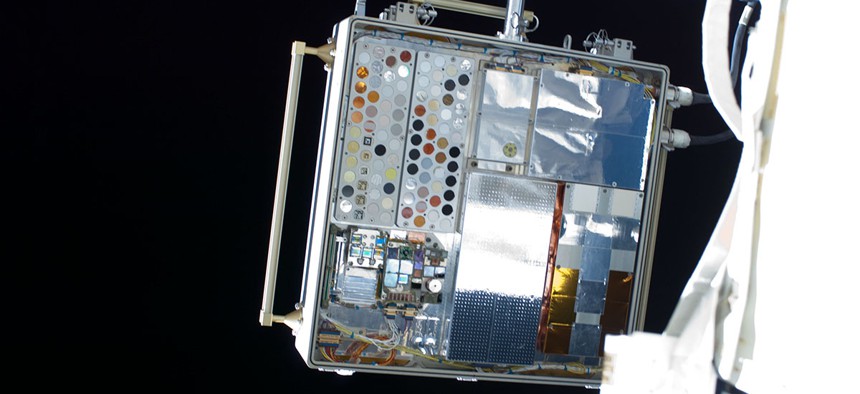Video: Testing the Materials That Will Take Us to Mars

Experiment sample trays on MISSE-8 attached to the exterior of the International Space Station in 2013. These trays held the ionic liquid epoxy samples that could help build composite cryogenic tanks for future spacecraft. NASA
Putting polymers to the test.
How do you decide what materials to use to build a Mars-bound spacecraft? NASA is testing them all. The agency is conducting a Materials on International Space Station Experiment (MISSE) to determine which material will best withstand the extreme temperatures and high levels of radiation that is experienced during space travel.
The experiment involves putting swatches of each material on a large appendage on the outside of the space station and recording the results.
"What we found was that the Teflon erosion rate is highly dependent on the amount of sunlight and possibly the heating too," said Kim de Groh, a senior materials scientist at NASA’s Glenn Research Center. "You need to know which of these environments it's going to be exposed to because it'll erode at a different rate depending on the environment."
How will this affect us on Earth? Finding the most durable material lets us build better, stronger satellites for our own earthly activities.
To learn more, check out the video below from NASA:
NEXT STORY: America's Great Science and Technology Divide



